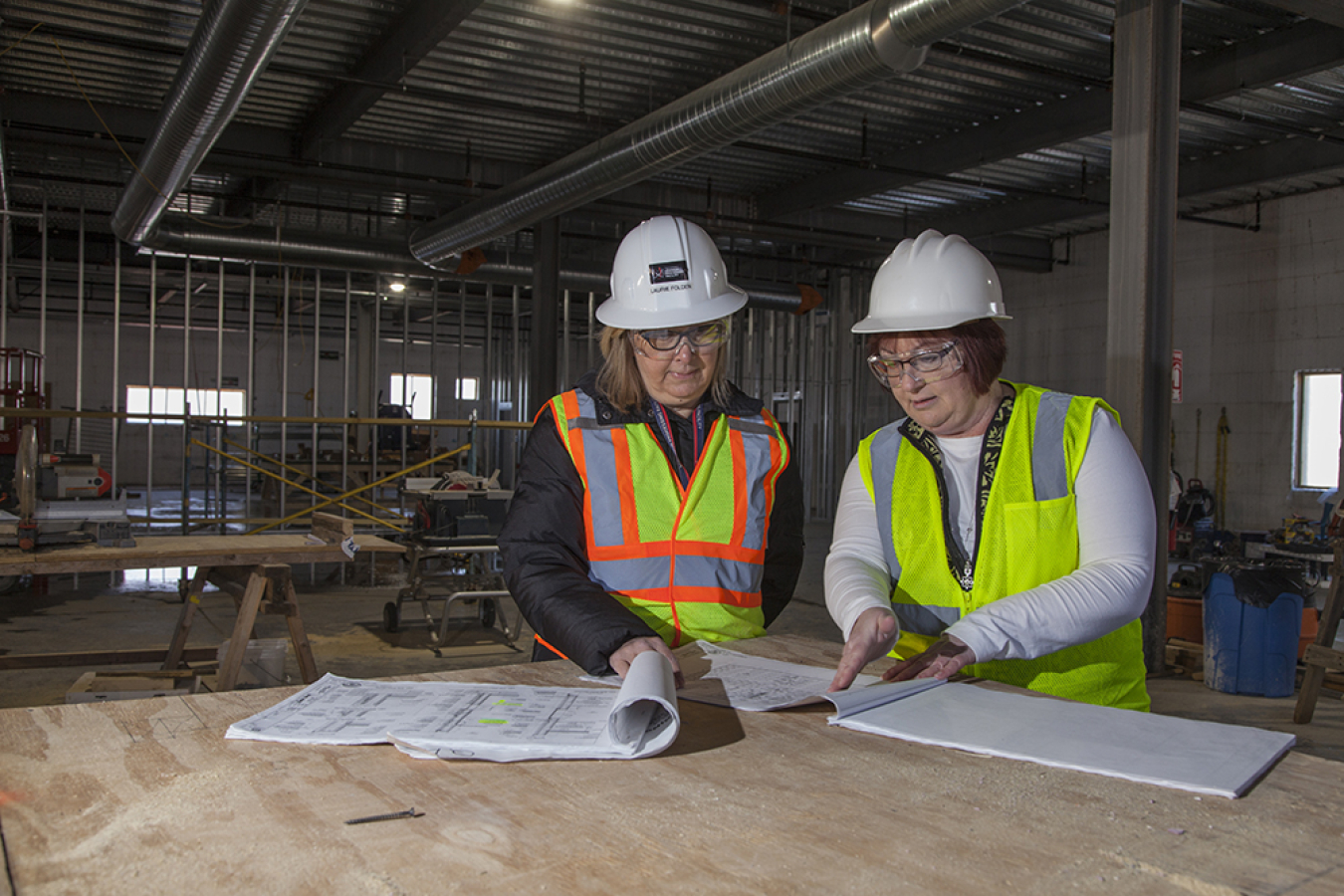
Engineers and project managers are key to NNSA missions. Here, Laurie Folden and Pam Gorman study blueprints for a project at the Y-12 National Security Complex.
NNSA’s national security missions depend on a modern, flexible, and resilient nuclear complex. NNSA’s Office of Infrastructure manages the lifecycle of the Nuclear Security Enterprise and positions the agency to handle its growing infrastructure needs.
The mission of this office is to provide NNSA with centralized infrastructure planning processes; program management for operations of facilities, maintenance, recapitalization, disposition, and line-item construction; and perform project and contract management of line-item construction and major end items.
NNSA has embarked in a data-driven infrastructure stewardship approach that ensures efficiency and repeatable results. Using data-driven and risk-informed decision-making tools, as well as an approach that allows transparent, predictable and repeatable outcomes to meet the agency’s future mission needs and requirements, NNSA’s Office of Infrastructure maintains, operates, and modernizes facilities across NNSA’s sites and laboratories in a safe, secure, and cost-effective manner.
Independent peer reviews occur throughout the project lifecycle and an affirmative decision by the Project Management Executive (PME) is required to advance to the next project phase.
CD-0 | Approve Mission Need
- Codifies that there is a mission gap that cannot be met by other than material means
- Rough Order of Magnitude cost used to determine the PME
- Cost estimate is not a budget quality estimate
- Starts the Analysis of Alternatives (AoA) process
CD-1 | Approve Alternative Selection and Cost Range
- Project focused on one solution: preliminary analyses on safety, NEPA, and other important project aspects is completed
- The AoA is complete, it’s a comparative analysis of feasible alternatives
- Analysis focuses on items that discriminate between alternatives
- A proposed alternative is selected to proceed to conceptual design
- Conceptual design is matured to 15%-30% based on complexity
- Bounding cost and schedule estimates at CD-1 are refined as design progresses prior to establishing the baseline at CD-2
- Top end of CD-1 range is used for budgeting purposes
- If top end of the range is exceeded the PME is notified for additional action as deemed necessary
CD-2 | Approve Performance Baseline
- Definitive scope, schedule, and cost baselines are developed and approved by the PME
- Design completed as appropriate for complexity of project (nuclear and complex projects require 90% design completion)
- Cost and schedules represent commitments to Congress in budget submission
- Letters sent to Congress by the Secretary or designee on baseline approval
- Subproject baselines may be established separately
CD-3 | Approve Start of Construction/Execution
- NNSA combines with CD-2
- Maximizes estimate confidence by limiting market timing risk
- Best value contracting approach balances cost, schedule, risk
CD-4 | Approve Start of Operations and Project Completion
- Project completed and turned over to operations
- Program and site teams verify all work is completed and project can be used for its intended purpose
- PME closes out project confirming the mission need will be met
- Final costs used to determine if project successfully completed
NNSA’s Office of Infrastructure maintains, operates, and modernizes facilities across the Nuclear Security Enterprise in a safe, secure, and cost-effective manner. Infrastructure projects greater than $50M are managed with NNSA’s Critical Decision (CD) Process.NNSA

